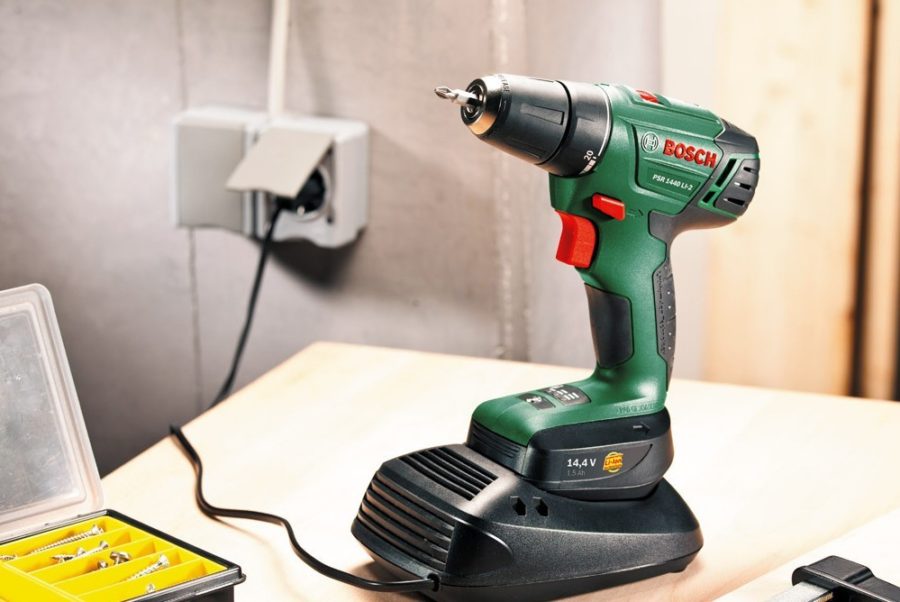You have been dreaming for a long time with an excellent Boshevsky screwdriver, like with a neighbor. Finally, he is in your hands. Arriving home, they found out that he served only a couple of months with a neighbor and broke down. How so? What did he do with him? You will find a brief instruction on the correct handling of the tool in the text.

Content
Do not clamp short bits into the cartridge
Bits in everyday life are of different lengths, but it happens that it is impossible to find a long one at home, and twisted fasteners are deep. How to use it without damaging the tool and hardware? The very first impulse is to fix the bat to the very tip. But this should never be done! Clamping the shank with the ends of the jaws, we bend them. When slipping, some of the sponges wear out. This leads to the impossibility of clamping thin drills - the cartridge ceases to hold, the instrument warps.
What is the way out of the situation?
- Have bits of all sizes - from short to long.
- Use a magnetic or mechanical adapter to extend the tooling. The adapter itself is clamped into the cartridge to the end, and the bit is attached to the protruding tip.
It is worth following this rule and the jaws of the instrument will remain intact.
Do not over tighten the fastener with a screwdriver if the torque limiter has tripped
The next common mistake is pulling fasteners manually after triggering the limiter ratchet. The restriction is made:
- to reduce the load on the gearbox,
- prevent tool wear,
- reduce damage to the spline head of the self-tapping screw.
On modern devices, quick-clamping single-sleeve cartridges are installed. The gearbox lock in them is made to facilitate the replacement of equipment and does not withstand heavy loads. To reach the fasteners use a powerful screwdriver with a T-shaped handle.
Do not ignore triggered thermal protection
If the device is overloaded or if it is used for a long time, thermal protection may work and the device will be de-energized. The protection board is triggered in several cases - when applying a high voltage, high charging current, low return current from the battery.
If the battery gives a bad charge - this means the battery is unsuitable for specific loads. The problem is solved by replacing with high-current batteries.
Do not leave the screwdriver discharged
The market uses several types of batteries for screwdrivers. All have positive and negative sides.
Nickel cadmium
Advantages of this type of battery:
- term of use is up to 10 years,
- stability when working in the cold,
- reliability and a thousand series of charge-discharge,
- the possibility of a full discharge.
Minuses:
- extreme toxicity
- loss of capacity when improperly charged.
Nickel metal hydride
The undoubted advantages of this type of battery:
- light weight
- small sizes
- low toxicity
- minimum loss of capacity when improperly charged,
- large capacity
- damage resistance
- up to 1500 series of discharge-charge.
The disadvantages include:
- the inability to use in winter in outdoor conditions,
- quick discharge
- high price,
- longer charging time
- "Deadly" deep discharge,
- short life span.
Lithium ion
In many respects it is much more effective than the others in a number of parameters:
- lack of a “memory effect",
- there is no loss of power when the battery is low,
- service life up to 8 years,
- reduced self-discharge,
- fast charge
- non-toxic
- high power
- small sizes.
Negative sides:
- high vulnerability to impact and deformation,
- "Dying" when fully discharged and recharged,
- fast loss of capacity at subzero temperatures,
- high price.
Based on the characteristics of the batteries, we conclude that it is impossible to store 2 types of batteries for a long time - nickel-metal hydride and lithium-ion. With a deep discharge, they quickly become worthless. Batteries are more ancient - nickel-cadmium are resistant to deep discharge, but are heavy and inconvenient to use.